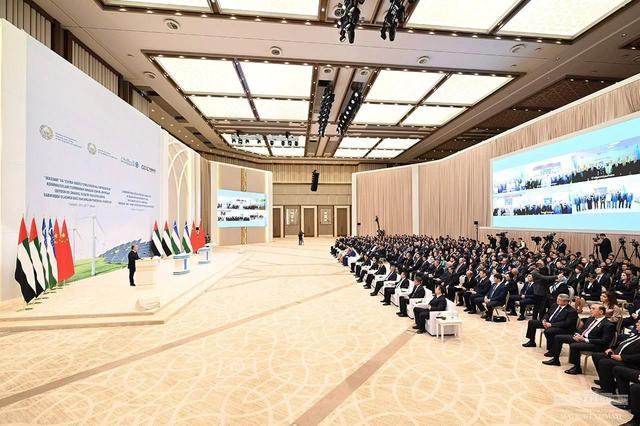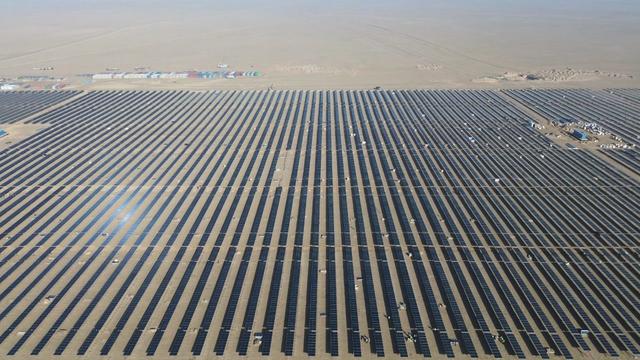China Energy Engineering Corporation (CEEC) has connected the first 400 MW phase of its 1 GW solar project in Uzbekistan to the grid. This achievement, reached on December 27th, was celebrated with Uzbekistan’s President, Mirziyoyev, attending the ceremony.

Mirziyoyev praised CEEC for the rapid grid connection, recognizing its contribution to Uzbekistan’s clean energy goals. He emphasized the project’s role in boosting local green energy and fostering economic development.
This 400 MW solar project is a significant move for Chinese enterprises in Central Asia, marking the largest n-type PV power station outside of China. It exclusively uses Hi-MO 7 modules from LONGi.
This success aligns with the Belt and Road Initiative’s broader goals, and the Uzbekistan 1 GW solar project, signed during the visit of Uzbekistan’s Energy Minister to China, involves constructing two 500 MW solar power stations.

Once fully operational, the project is expected to generate 2400 GWh annually, reducing natural gas consumption by around 588 million cubic meters per year. It will also create approximately 1,600 local jobs and contribute an estimated $140 million in tax revenue.
Uzbekistan, with 97% of its renewable energy potential from solar sources, aims for carbon neutrality by 2050. Chinese enterprises, supporting Uzbekistan’s energy transition, play a crucial role. CEEC has invested around $8.1 billion in green projects in Uzbekistan, with $2.4 billion already in progress.
LONGi supplied Hi-MO 7 modules to this project, designed for high efficiency in challenging environments. The modules, introduced in 2023, offer a 3% increase in electricity generation compared to mainstream bifacial modules.


